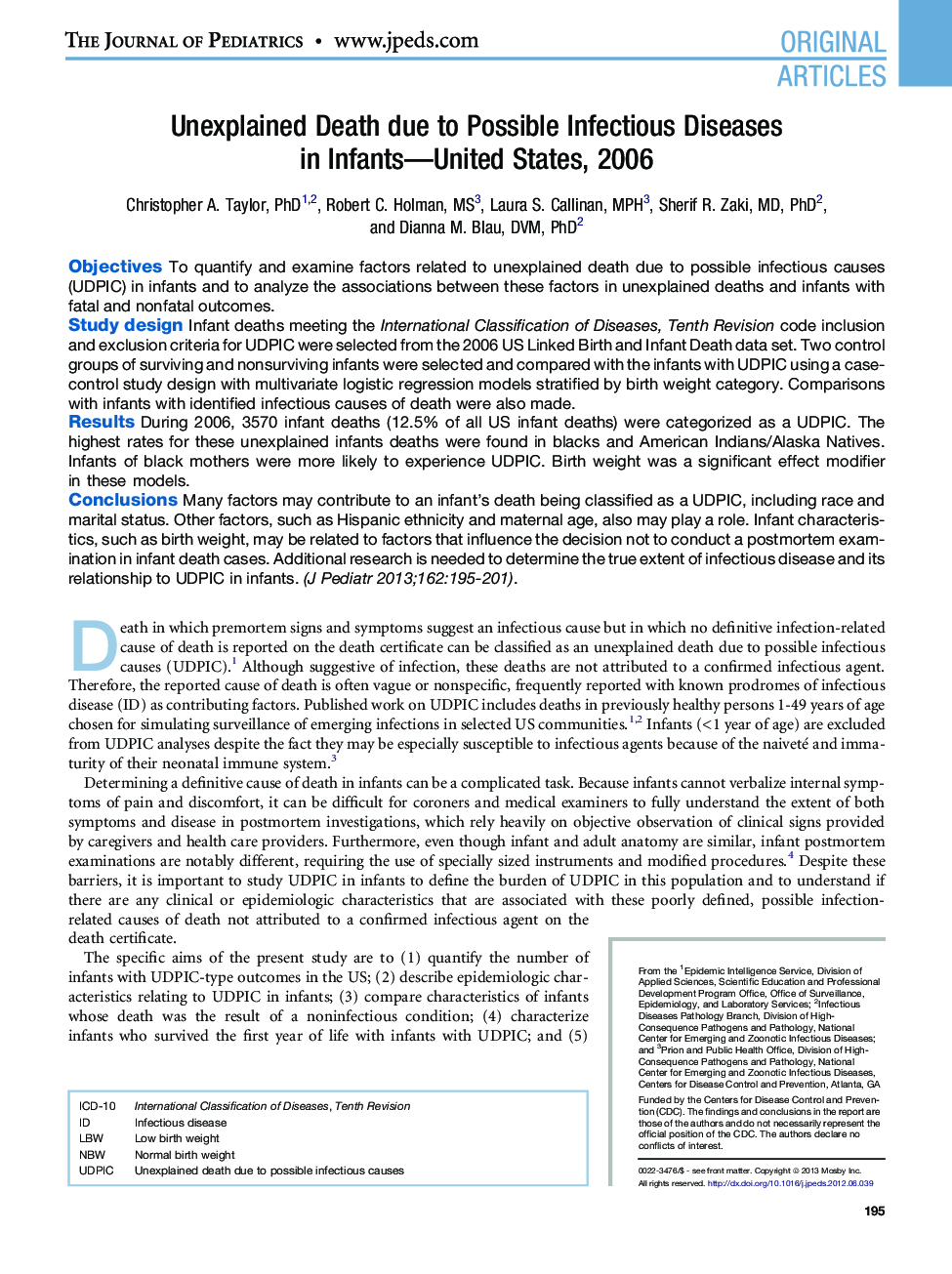| Article ID | Journal | Published Year | Pages | File Type |
|---|---|---|---|---|
| 6224372 | The Journal of Pediatrics | 2013 | 10 Pages |
ObjectivesTo quantify and examine factors related to unexplained death due to possible infectious causes (UDPIC) in infants and to analyze the associations between these factors in unexplained deaths and infants with fatal and nonfatal outcomes.Study designInfant deaths meeting the International Classification of Diseases, Tenth Revision code inclusion and exclusion criteria for UDPIC were selected from the 2006 US Linked Birth and Infant Death data set. Two control groups of surviving and nonsurviving infants were selected and compared with the infants with UDPIC using a case-control study design with multivariate logistic regression models stratified by birth weight category. Comparisons with infants with identified infectious causes of death were also made.ResultsDuring 2006, 3570 infant deaths (12.5% of all US infant deaths) were categorized as a UDPIC. The highest rates for these unexplained infants deaths were found in blacks and American Indians/Alaska Natives. Infants of black mothers were more likely to experience UDPIC. Birth weight was a significant effect modifier in these models.ConclusionsMany factors may contribute to an infant's death being classified as a UDPIC, including race and marital status. Other factors, such as Hispanic ethnicity and maternal age, also may play a role. Infant characteristics, such as birth weight, may be related to factors that influence the decision not to conduct a postmortem examination in infant death cases. Additional research is needed to determine the true extent of infectious disease and its relationship to UDPIC in infants.
